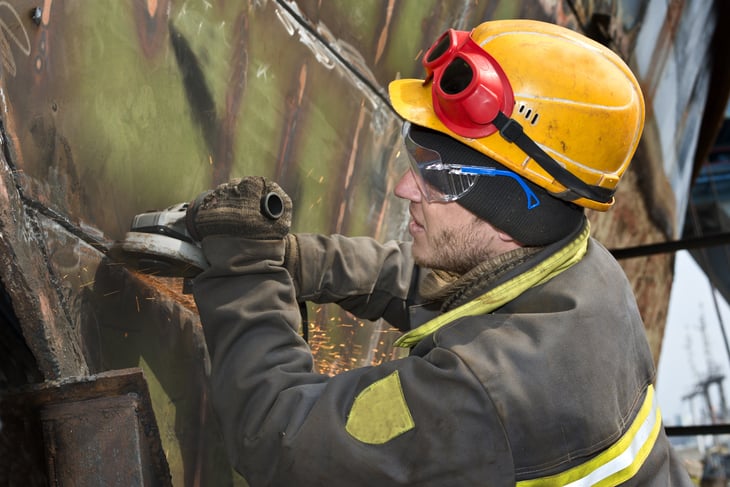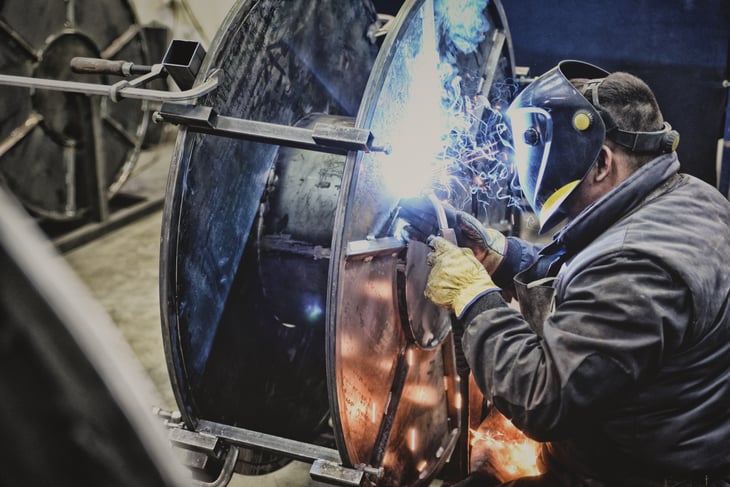
Members of the Class of 2019 have turned their tassels, and now it’s time to launch their careers. However, some first jobs are better than others.
WalletHub analyzed 109 entry-level positions, ranking them based on:
- Immediate opportunities, including salary and job openings
- Growth potential
- On-the-job hazards, including fatal injuries and the likelihood of working more than 40 hours a week
Based on WalletHub’s findings, here are some the worst (from least bad to worst of all) and best (from good to great) entry-level positions. The occupations’ scores are based on a 100-point scale.
Worst entry-level jobs
5. Tool and die maker

WalletHub score: 39.49
WalletHub’s low-ranking entry-level jobs typically require manual labor.
The job of entry-level tool and die maker earns low scores thanks to poor potential for career growth and potentially hazardous working conditions.
Tool and die making is a type of machinist job. The work, according to the Bureau of Labor Statistics (BLS), includes operating computerized and mechanical tools, and assembling and making parts.
Traditionally a solid career, tool and die making has been hit hard by automation. Job opportunities will drop by about 7% from 2016-2026, predicts the BLS.
4. Auto mechanic

WalletHub score: 39.20
WalletHub rates an auto mechanic’s work as one of the worst entry-level jobs, although this work is crucial to keeping us all on the road safely.
WalletHub scores auto mechanic jobs particularly poorly (102nd in a field of 109 job types) for job hazards, and ranks it around the middle of the pack for current job opportunities and career growth.
The outlook through 2026 for mechanics and auto service technicians is for 6% job growth, which is about average, according to the BLS.
If you become an auto mechanic, be prepared to work on your feet most of the day and for the possibility of injuries such as small cuts, sprains and bruises, from working with heavy tools and equipment, the BLS says.
3. Floor assembler

WalletHub score: 38.35
Floor assemblers put together and test manufactured parts at floor stations in factories, according to Salary.com’s job description.
The overall job category of assemblers and fabricators is expected to experience job losses, rather than job growth, through 2026, according to the BLS, which predicts a job decrease of 14%.
Employees in this field whose salaries place them in the bottom 10% for wages earn less than $22,040 a year.
2. Boilermaker

WalletHub score: 36.27
Boilermakers install and maintain boilers and other vessels that contain liquid or gas.
The job pays well — the BLS cites a median wage of $62,150 — but boilermakers face a competitive job market with growth of about 9% expected. The occupation is also prone to periods of unstable employment during economic upturns and downturns, the BLS notes.
The physically demanding nature of the job, involving hazardous work with hot liquids under pressure, helps make this the second-worst entry-level job, according to WalletHub.
1. Welder

WalletHub score: 33.51
Of all the entry-level jobs you might aspire to, WalletHub concludes that the worst is welder, a worker who uses hand-held or remotely controlled equipment to join or cut metal parts.
WalletHub gives this trade a paltry 33.51 out of 100 points. It came in nearly dead last for growth potential, and its job hazards put it among the most dangerous jobs.
Although welders may not have much trouble finding a job right away, their long-term prospects and work environment leave much to be desired. Welders work outdoors, sometimes in bad weather or inside in confined areas. Dangers include working on a scaffold or on high areas and lifting heavy objects.
Overtime is common, says the BLS, and job growth for the trade is projected at just 6%.
Best entry-level jobs
5. Hardware engineer

WalletHub score: 77.79
Computer hardware engineers design, develop and test computer components — circuit boards and processors, for instance.
They are well-paid, earning a median annual income of $114,600 as of 2018, the BLS reports. Even workers in the bottom 10% for wages earned a median $66,700.
Combined with average job growth — about 5% — and relatively few job hazards, that’s enough to help make hardware engineer one of the best entry-level jobs.
4. Environmental, health and safety engineer

WalletHub score: 78.28
The job of a health and safety engineer is to create systems and procedures to protect humans from injury or illness and to protect property from damage.
This requires a combination of training in public health and safety and in engineering as they will encounter machinery, software, chemicals, software and other products and challenges.
The median pay for this work was $89,130 in 2018. The BLS estimates job growth at 9%, about average, between 2016 and 2026.
3. Engineer

WalletHub score: 79.82
Becoming an engineer of any kind may be a good bet.
Job growth for all architecture and engineering occupations is expected to be about average, at an estimated 7%, from 2016 to 2026, according to the BLS.
These are typically good-paying jobs, with a median income of $80,170 as of 2018. That’s more than twice the median income for all occupations.
What’s more, you can get most of these jobs with a four-year bachelor’s degree — no graduate degree required. Some technician jobs in the field only require an associate degree.
2. Systems engineer

WalletHub score: 79.96
Systems engineers rank highest for immediate opportunity, WalletHub says. That metric reflects the average starting salary, the number of job openings and the unemployment rate for these workers.
That, along with expected job growth and low-hazard work environments, helps make systems engineering the second-best entry-level job right now.
Unlike other engineering specialties focused on a specific discipline, systems engineers are responsible for looking at the big picture — how parts of a whole system work together.
The International Council on Systems Engineering notes these workers create comprehensive solutions that meet business and technical needs. If you’re looking for a rewarding yet challenging job, this may be it.
1. Electrical engineer

WalletHub score: 80.07
The field of electrical engineering gets high scores from WalletHub for immediate opportunity and relatively few job hazards.
These professionals work in a variety of industries — automobile manufacturing, telecommunications and semiconductor manufacturing — for a few examples.
The BLS says demand for electrical engineers may be greatest in the area of research and development — in tech companies, particularly — as those businesses seek to stay ahead of the competition. Overall, job opportunities for electrical engineers are expected to grow 9% from 2016-2026.
The BLS notes that the median annual wage for electrical engineers was $96,640 in 2018. Even those in the bottom 10% for wages in this field, a group that could be expected to include many entry-level workers, earn $61,190, according to the BLS.
Do you agree that these are the best and worst entry-level jobs? Share your thoughts in a comment below or on our Facebook page.




Add a Comment
Our Policy: We welcome relevant and respectful comments in order to foster healthy and informative discussions. All other comments may be removed. Comments with links are automatically held for moderation.